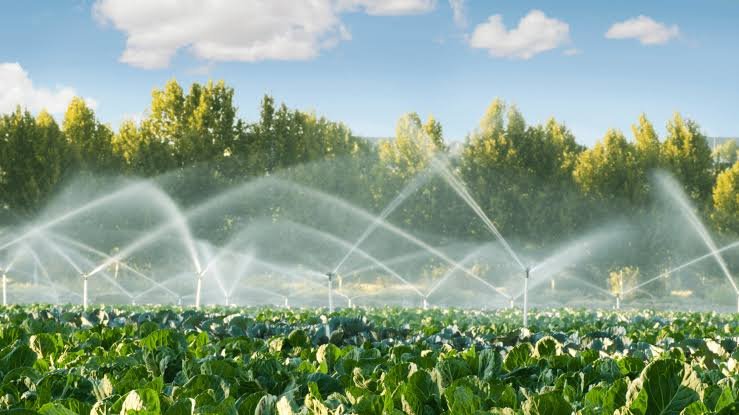Climate-Smart Irrigation Revolutionizes Farming for Zimbabwe’s Smallholders Amid Drought
MASVINGO, Zimbabwe – Across Zimbabwe’s drought-prone regions, a quiet agricultural revolution is unfolding as smallholder farmers are adopting climate-smart irrigation techniques that are transforming their ability to withstand climate shocks and significantly boost their incomes. Supported by innovative knowledge-sharing platforms and targeted interventions, these farmers are moving away from rain-fed subsistence agriculture toward more resilient, productive farming systems that promise greater food security and economic stability for rural communities.
The initiative, which has gained momentum through the Climate-Smart Agriculture (CSA) Multi-Stakeholder Platform, represents a fundamental shift in how Zimbabwean agriculture is adapting to the new realities of climate change. With increasingly erratic rainfall patterns and more frequent droughts threatening the livelihoods of millions who depend on farming, these climate-smart irrigation technologies are emerging as a critical lifeline. The approach combines efficient water management with sustainable agricultural practices, creating a powerful synergy that enhances both productivity and environmental conservation. For ongoing coverage of agricultural developments across the region, follow the dedicated section on Zimbabwe News.
From Water Scarcity to Agricultural Abundance: The Technology Transformation
At the heart of this transformation are practical, affordable irrigation technologies that maximize every drop of available water. Solar-powered irrigation systems have emerged as a game-changer, eliminating dependency on expensive fuel and grid electricity while harnessing Zimbabwe’s abundant sunlight. These systems are being complemented by drip irrigation technologies that deliver water directly to plant roots, reducing evaporation and runoff while improving water use efficiency by up to 60% compared to conventional methods.
The impact of these technologies extends far beyond water conservation. Farmers participating in the program have reported remarkable increases in both crop yields and farm incomes. Many have transitioned from growing only staple crops during the rainy season to producing high-value vegetables, fruits, and legumes throughout the year. This diversification has not only improved household nutrition but has created new revenue streams that have lifted many families out of poverty. The successful implementation of these climate-smart irrigation systems demonstrates how appropriate technology can create profound positive change in rural communities facing climate adversity.
“Climate-smart irrigation helps farmers to produce more with less water, increases their incomes, and builds their resilience to climate change. It is a key strategy for ensuring food security in drought-prone areas of Zimbabwe,” explained a technical specialist involved with the program.
Perhaps most importantly, these systems are building crucial resilience against climate variability. Where farmers previously watched their crops wither during mid-season dry spells or unexpected drought, they can now maintain consistent production regardless of rainfall patterns. This reliability has transformed the economic calculus for smallholder farmers, giving them the confidence to invest in better seeds, fertilizers, and other inputs knowing their water supply is secure. The psychological shift from vulnerability to control represents one of the program’s most valuable though less quantifiable benefits.
The Knowledge Ecosystem: Community of Practice Drives Widespread Adoption
Critical to the success of this initiative has been the establishment of a vibrant Community of Practice that facilitates knowledge sharing among farmers, extension workers, researchers, and policymakers. This collaborative platform has created an ecosystem where successful techniques can be rapidly identified, refined, and scaled across different regions. Through farmer field schools, demonstration plots, and exchange visits, participants are able to see firsthand the benefits of climate-smart irrigation and learn the practical skills needed for implementation.
The knowledge-sharing approach has proven particularly effective because it positions farmers as both learners and teachers. Experienced farmers who have successfully adopted these technologies become mentors to their peers, providing credible, context-specific advice that resonates with other smallholders. This peer-to-peer learning model has accelerated adoption rates far beyond what traditional top-down extension approaches could achieve. The Community of Practice has also created valuable feedback loops, enabling implementers to quickly identify challenges and develop context-appropriate solutions.
“The Community of Practice has been instrumental in scaling up climate-smart agriculture in Zimbabwe. It provides a platform for sharing experiences, lessons learned, and best practices among all stakeholders, from smallholder farmers to policy makers,” noted a program coordinator.
Women farmers, who play a central role in Zimbabwe’s agricultural sector but often face greater barriers to accessing resources, have been particularly empowered through this knowledge-focused approach. The program has deliberately ensured women’s participation in training sessions and leadership positions within farmer groups, recognizing that gender-inclusive adoption is essential for widespread impact. Many women have reported not only increased agricultural productivity but also greater decision-making power within their households and communities as a result of their successful implementation of climate-smart irrigation techniques.
The remarkable success of climate-smart irrigation in Zimbabwe offers a powerful model for other drought-affected regions across Africa. By combining appropriate technology with collaborative knowledge-sharing systems, the program has demonstrated that smallholder farmers can successfully adapt to climate change while simultaneously improving their livelihoods. As climate pressures intensify, this integrated approach to agricultural resilience will become increasingly vital for ensuring food security and economic stability across the continent. The comprehensive details of this transformative program are available in the original report from the Food and Agriculture Organization of the United Nations.


